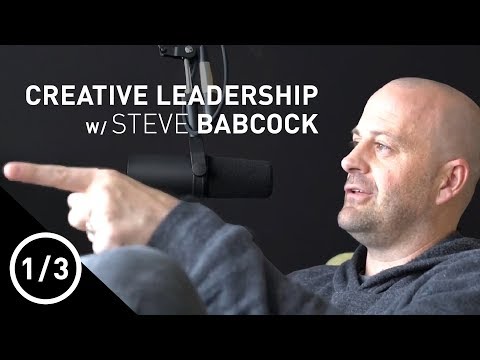Chief Creative Officer: Job Description and Salary
Chief Creative Officer Job Description
A Chief Creative Officer (CCO) is a high-level executive responsible for overseeing the creative direction and strategy of a company. They are responsible for leading the creative team in developing innovative ideas, concepts, and campaigns that align with the company’s brand and objectives. The CCO collaborates with other departments such as marketing, design, and product development to ensure a cohesive and consistent brand image across all platforms.
The main responsibilities of a CCO include developing and implementing creative strategies, managing and inspiring the creative team, and overseeing the production of creative materials such as advertisements, videos, and graphics. They also stay updated with industry trends and consumer insights to identify new opportunities and enhance the company’s creative output.
Chief Creative Officer Salary
The salary of a Chief Creative Officer varies depending on factors such as company size, industry, location, and experience. On average, a CCO can earn a salary ranging from $150,000 to $300,000 per year. However, in larger companies or industries with high competition, the salary can exceed $500,000 annually.
In addition to the base salary, Chief Creative Officers often receive bonuses, profit-sharing, and stock options as part of their compensation package. Moreover, CCOs in executive positions may enjoy additional perks such as health benefits, retirement plans, and flexible work arrangements.
Overall, the role of a Chief Creative Officer is highly demanding, requiring a combination of creative expertise, leadership skills, and business acumen. The salary reflects the level of responsibility and the value that a CCO brings to the organization in terms of driving innovation, brand development, and revenue growth.

Chief Creative Officer Job Description Template
Chief Creative Officer (CCO) is a high-level executive position within a company’s creative department. The CCO is responsible for leading and managing the creative team, overseeing the development of innovative ideas, and ensuring the overall creative direction aligns with the company’s brand and objectives.
The primary role of a CCO is to drive creativity and innovation within the organization. They must possess a strong artistic vision and be able to inspire and motivate the creative team to produce high-quality and original work. The CCO collaborates closely with other departments such as marketing, advertising, and product development to ensure that the company’s creative initiatives are effectively integrated into the overall business strategy.
One of the important responsibilities of a CCO is to stay up-to-date with industry trends and emerging technologies. They constantly seek new ways to enhance the company’s creative output and keep it ahead of the competition. Additionally, the CCO is often involved in client presentations and pitches, representing the company’s creative capabilities and vision.
Leadership and strategic thinking are key qualities for a successful CCO. They must be able to build and maintain a strong creative team, foster a collaborative and innovative work environment, and effectively manage resources and budgets. The CCO also plays a crucial role in developing and implementing creative processes and workflows to ensure efficiency and consistent quality across projects.
In summary, the Chief Creative Officer is a pivotal role in any organization, driving innovation, overseeing creative direction, and ensuring that the company’s creative output aligns with its brand and business objectives. Their leadership and artistic vision are essential in fostering a culture of creativity and achieving success in a competitive market.
Chief Creative Officer Responsibilities
Chief Creative Officer Requirements
How Much Does A Chief Creative Officer Make?
Chief Creative Officer Salary
| Company | Salary Range |
|---|---|
| Company A | $150,000 – $250,000 |
| Company B | $180,000 – $300,000 |
| Company C | $200,000 – $350,000 |
| Company D | $170,000 – $280,000 |
Chief Creative Officer (CCO) is a high-level executive responsible for overseeing the creative direction and strategy of a company. They are responsible for managing and leading the creative team, ensuring the company’s brand identity is maintained, and driving innovation in the creative process. The salary range for CCOs varies depending on factors such as company size, industry, and experience. The table above provides an overview of the salary ranges for CCO positions in different companies. It is important to note that these figures are approximate and can vary based on various factors.
Chief Creative Officer Salaries by Country
Top Paying Countries for Chief Creative Officer
| Country | Average Salary (USD) |
|---|---|
| United States | 150,000 |
| Switzerland | 140,000 |
| Australia | 130,000 |
| United Kingdom | 120,000 |
| Canada | 110,000 |
A Chief Creative Officer (CCO) is a high-level executive responsible for leading and managing the creative direction and strategies of a company. This role requires a combination of artistic talent, leadership skills, and business acumen. The salary of a CCO can vary significantly depending on factors such as the industry, company size, and geographical location. The table above showcases the top paying countries for Chief Creative Officers, with the United States offering the highest average salary at $150,000 per year. Switzerland, Australia, the United Kingdom, and Canada also offer competitive salaries for this position.
A video on the topic Chief Creative Officer
Interview Questions for Chief Creative Officer
1. Can you tell us about your background and experience as a Chief Creative Officer?
As a Chief Creative Officer, I have over 15 years of experience in the creative industry. I have a Bachelor’s degree in Fine Arts and have worked in various creative roles throughout my career, including graphic design, art direction, and creative direction. I have also led creative teams in developing successful campaigns for well-known brands.
2. What do you believe are the key qualities and skills needed to be an effective Chief Creative Officer?
In my opinion, an effective Chief Creative Officer should have strong leadership skills, the ability to think strategically and creatively, excellent communication skills, and a deep understanding of market trends and consumer behavior. Additionally, being open to collaboration, having a passion for innovation, and being able to adapt to changing technologies are also crucial qualities for success in this role.
3. How do you approach the creative process and ensure innovative ideas are generated?
I believe in fostering a creative environment that encourages collaboration and diverse thinking. I encourage my team to brainstorm freely, explore different perspectives, and challenge conventional ideas. By creating a safe space for experimentation and risk-taking, innovative ideas can flourish. I also believe in staying up-to-date with industry trends and constantly seeking inspiration from various sources to fuel the creative process.
4. How do you manage creative teams and ensure their work aligns with the overall brand vision?
I believe in providing clear direction and setting expectations from the start. I communicate the brand’s vision and values to the team and ensure they have a thorough understanding of the project goals and target audience. Regular check-ins and feedback sessions help me ensure that the work produced aligns with the brand’s vision. I also encourage an open dialogue and collaboration among team members to foster a sense of ownership and pride in their work.
5. How do you handle creative conflicts or disagreements within a team?
I approach creative conflicts or disagreements with an open mind and a focus on finding common ground. I encourage team members to share their perspectives and actively listen to their ideas. By fostering a culture of respect and constructive criticism, conflicts can be resolved through compromise or finding creative solutions that address everyone’s concerns. Ultimately, the goal is to maintain a positive and collaborative environment that brings out the best in each team member.
6. How do you stay updated with the latest trends and technologies in the creative industry?
I believe in continuous learning and staying curious. I regularly attend industry conferences, workshops, and webinars to stay updated with the latest trends and technologies. I also follow influential thought leaders and creative agencies on social media platforms to gain insights into emerging practices. Networking with professionals in the field and participating in online communities or forums also helps me stay connected to the pulse of the industry.
7. How do you measure the success of a creative campaign?
Measuring the success of a creative campaign involves setting clear goals and key performance indicators (KPIs) from the beginning. These KPIs could include metrics like brand awareness, engagement, conversions, or customer feedback. Regular monitoring and analysis of these metrics throughout the campaign’s lifecycle help determine its impact and success. It’s also essential to gather feedback from the target audience and stakeholders to gain insights and make improvements for future campaigns.
8. How do you ensure a balance between creativity and practicality in your work?
I believe in striking a balance between creativity and practicality by considering both the artistic vision and the project’s objectives. While nurturing innovative ideas, I also ensure that they are aligned with the brand’s goals, target audience, and budget constraints. Regular communication and collaboration with stakeholders, such as marketing and finance teams, help me understand the practical aspects and make informed decisions that achieve a balance between creativity and practicality.
9. Can you share an example of a challenging project you worked on and how you overcame obstacles?
One challenging project I worked on was developing a rebranding strategy for a well-established company. The main obstacle was convincing the stakeholders to embrace a more modern and contemporary visual identity while maintaining their brand equity. To overcome this, I conducted thorough research, created compelling presentations, and provided concrete examples of successful rebranding efforts in similar industries. By presenting a clear vision and involving stakeholders in the decision-making process, we were able to overcome resistance and successfully execute the rebranding strategy.
10. How do you foster a culture of creativity and innovation within your team?
To foster a culture of creativity and innovation, I encourage an open and inclusive environment where team members feel comfortable expressing their ideas. I organize regular brainstorming sessions, workshops, and team-building activities that promote collaboration and out-of-the-box thinking. I also celebrate and recognize individual and team accomplishments to boost morale and encourage a sense of ownership and pride in their work. Additionally, providing opportunities for professional growth and supporting ongoing skill development ensures that the team stays motivated and inspired to push boundaries.






